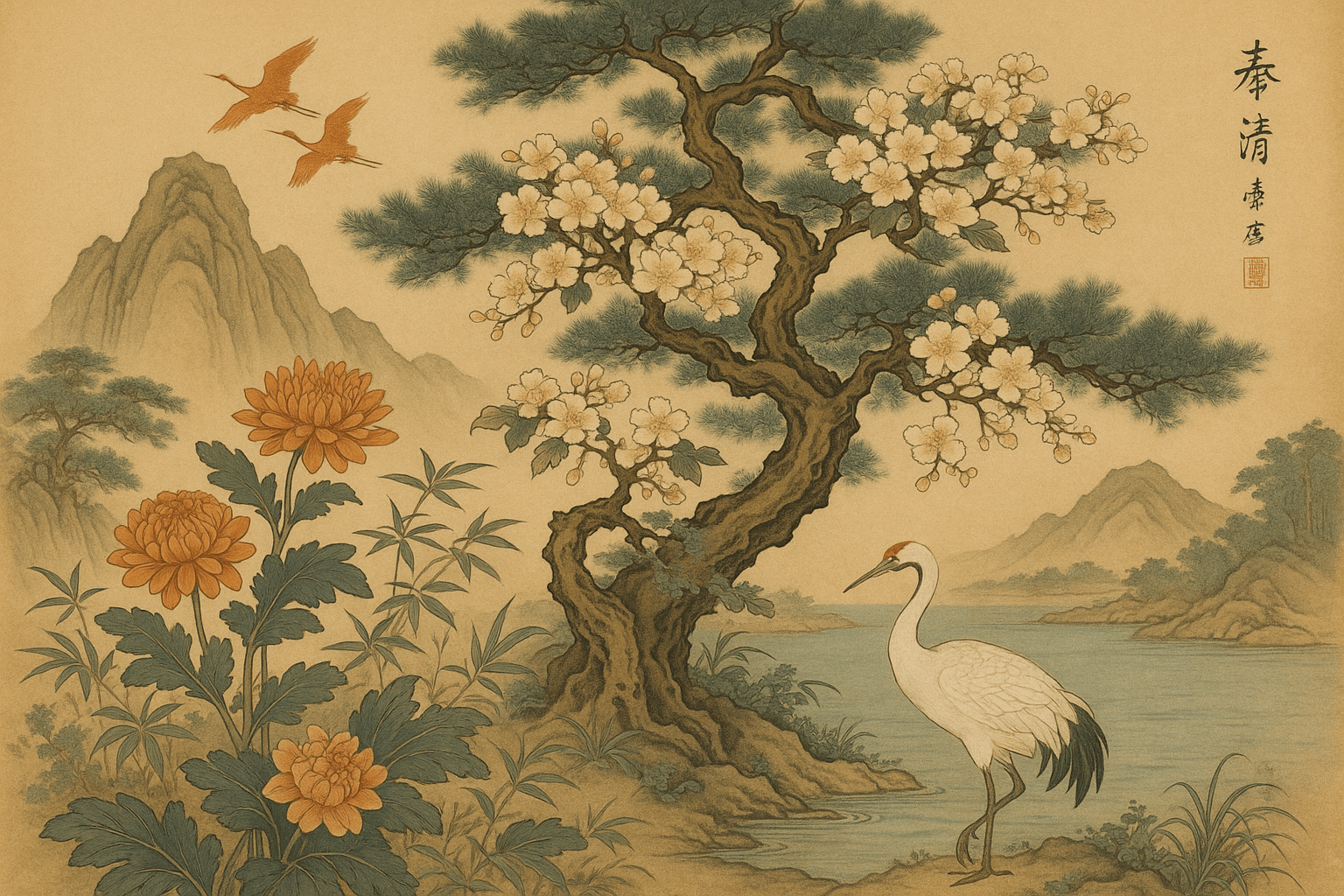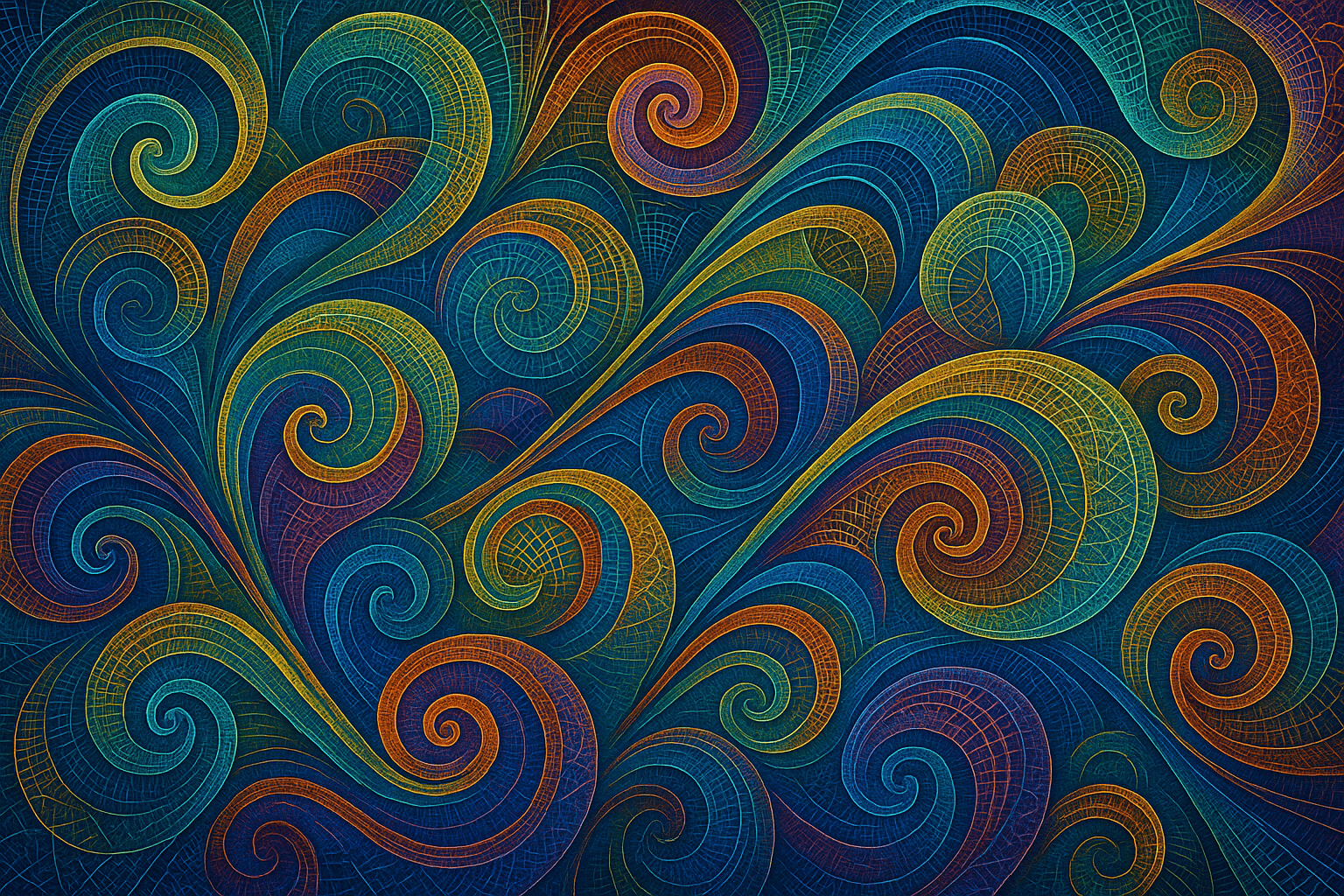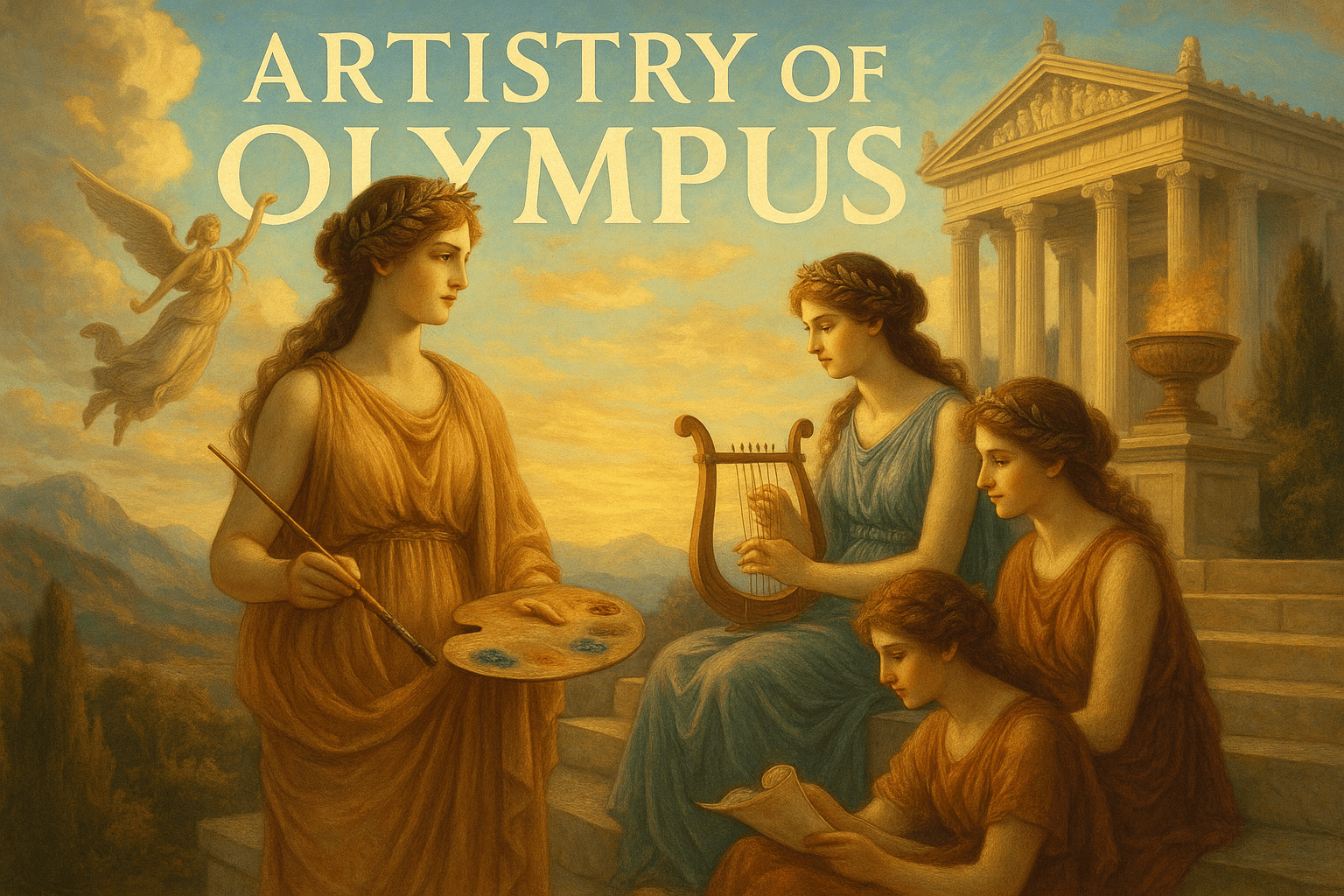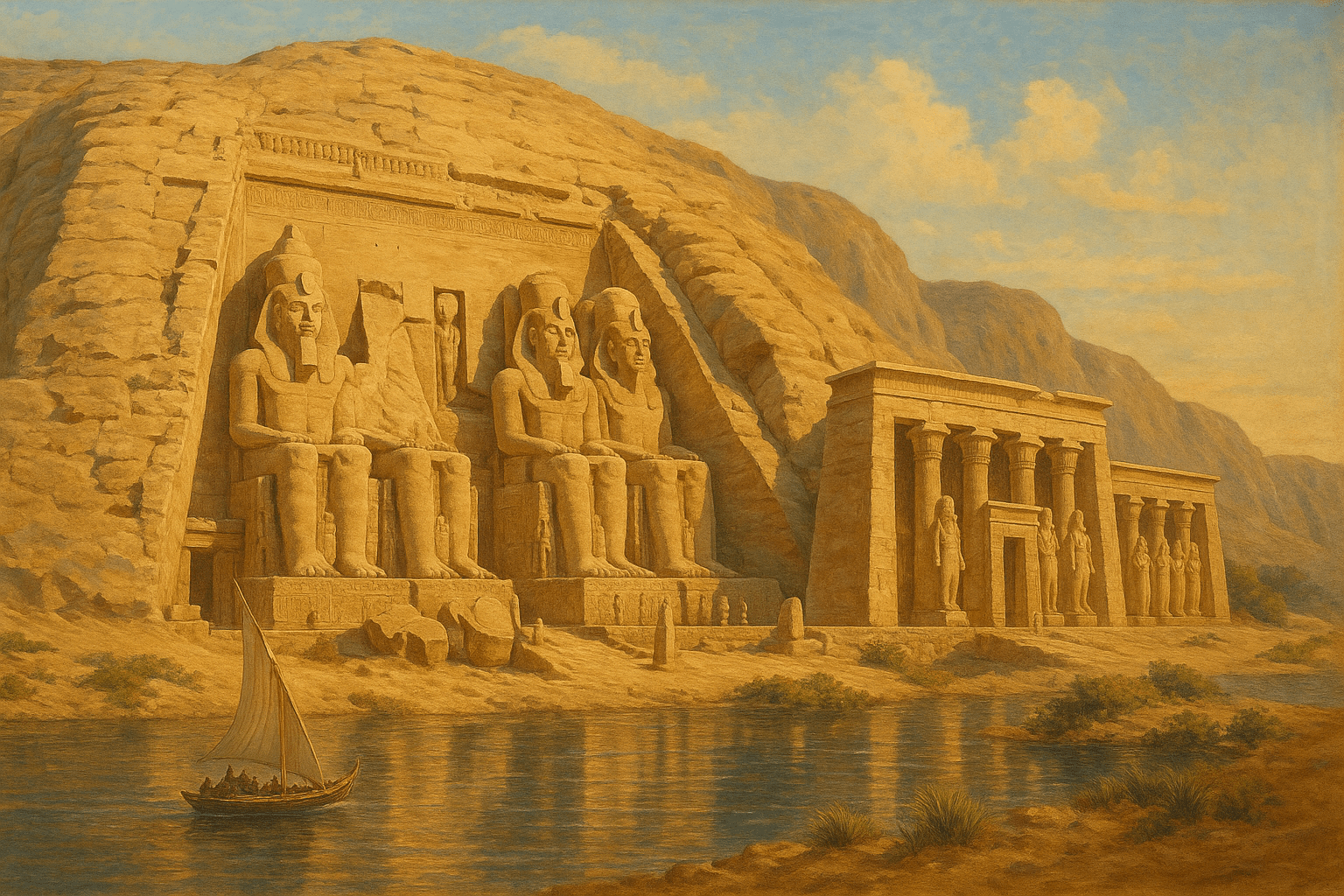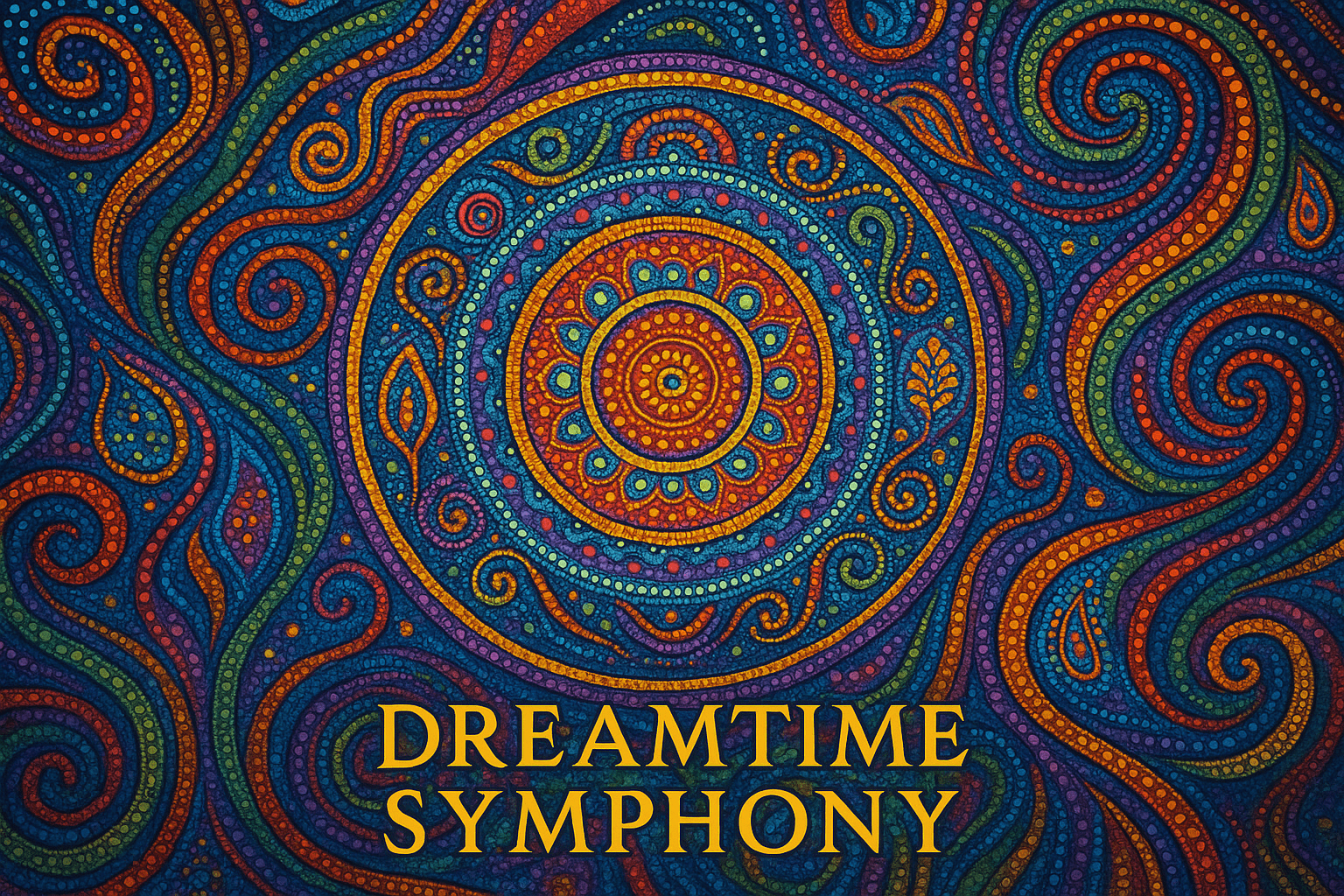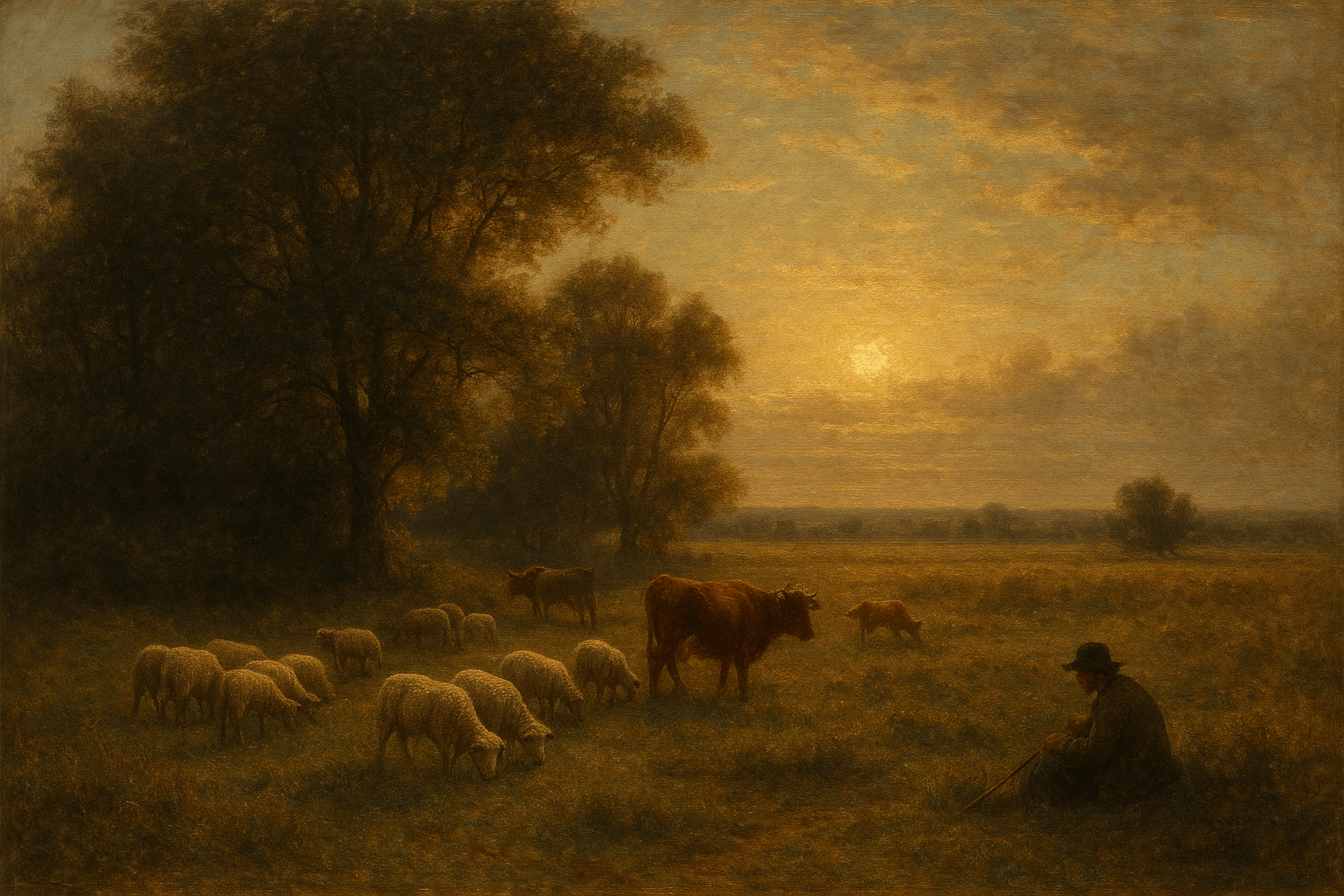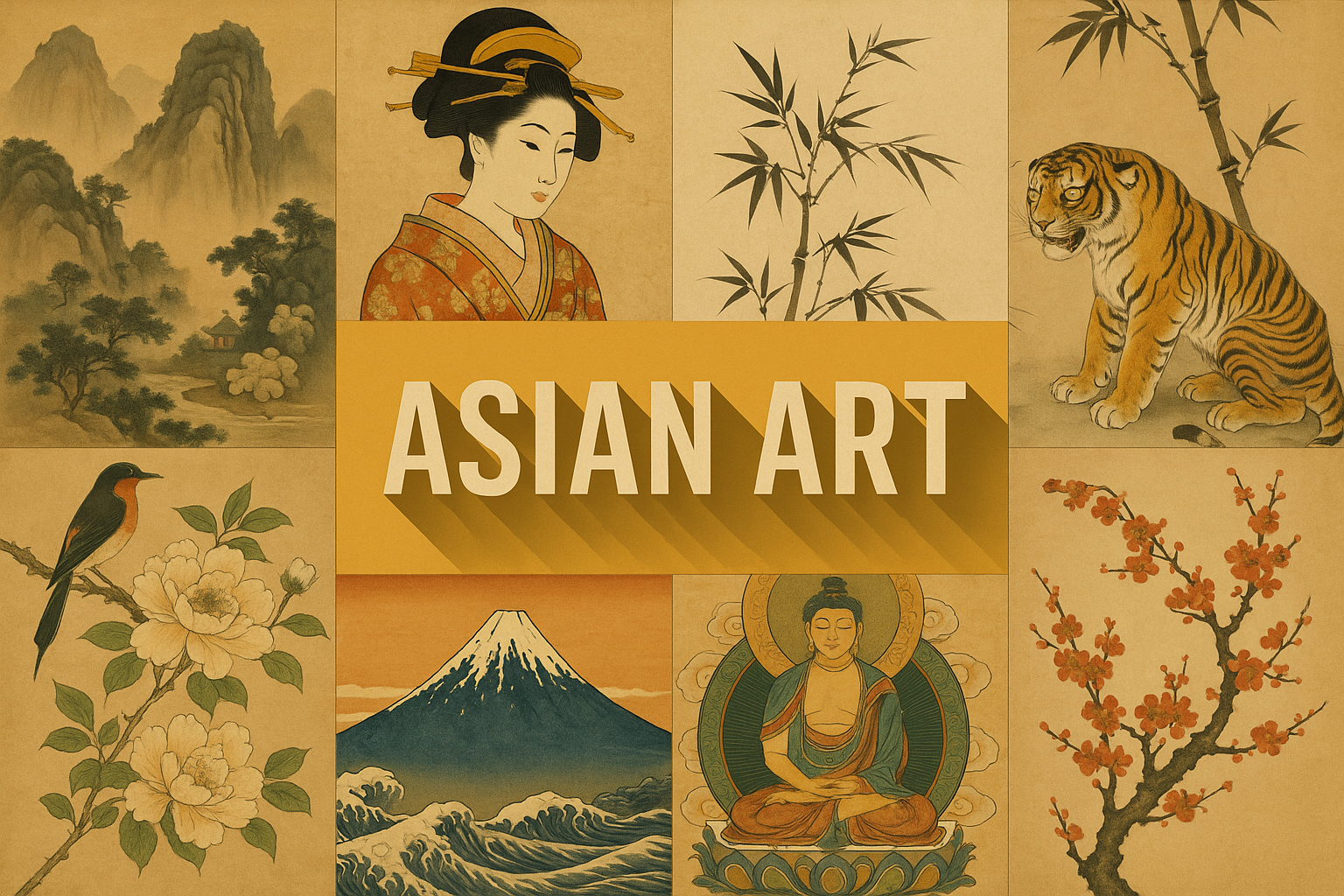
Asian Art
The visual appearance of Asian Art is characterized by its use of bright colors and bold patterns. Asian artists often use a variety of techniques to create their art, including painting, sculpture, and calligraphy.
AOI thinking about Asian Art [+_~]-/
Overview and Quickfacts
Asian art is a broad and diverse category that can refer to the art of any country in Asia. Common themes in Asian art include Buddhism, Confucianism, and Taoism, as well as folk traditions and popular culture. Asian art is often characterized by intricate patterns, bold colors, and a focus on nature.
Can understand it also, as:
Oriental Art, Far Eastern Art
Categorize it as:
Impressionism, Modernism
.: Dreaming :.
holds a HAIKU for the art style
:. Thought is power .:
Detailed Description
Asian art, the visual arts of the East Asian countries of China, Japan, and Korea. Although these countries have had different political systems and cultures, they share a common artistic heritage that began over two millennia ago. The art of Asia is remarkably diverse, encompassing a wide range of traditions and styles. The earliest art of Asia was produced in the Neolithic period (c. 8000ÃÂÃÂ2000 BCE). The most important Neolithic sites are in China, where a great many painted pottery vessels and carved jades have been found. These early artworks are characterized by simple geometric designs. During the Bronze Age (c. 2000ÃÂÃÂ1000 BCE), the art of Asia reached a new level of sophistication with the production of bronze vessels and sculptures. The most famous Bronze Age site is the tomb of the Chinese emperor Qin Shihuangdi (ruled 221ÃÂÃÂ210 BCE), which contains an army of life-size terra-cotta soldiers. The Iron Age (c. 1000 BCEÃÂÃÂ500 CE) saw the rise of the great civilizations of China, Korea, and Japan. The art of this period is characterized by its ornate decoration and its rich symbolism. The Chinese art of the period is best represented by the tomb art of the Han dynasty (206 BCEÃÂÃÂ220 CE). The most famous Han tomb is that of the emperor Jingdi (ruled 157ÃÂÃÂ141 BCE), which contains a wealth of painted murals and carved reliefs. The art of Korea and Japan also reached a high level of refinement during the Iron Age. The most famous Korean artworks are the tomb paintings of the Goguryeo kingdom (37 BCEÃÂÃÂ668 CE). The most famous Japanese artworks are the Buddhist statues of the Nara period (710ÃÂÃÂ784 CE). During the Middle Ages (c. 500ÃÂÃÂ1000 CE), the art of Asia continued to develop along different lines. In China, the Buddhist art of the Tang dynasty (618ÃÂÃÂ907 CE) reached a new level of elegance, while in Japan, the art of the Heian period (794ÃÂÃÂ1185 CE) was characterized by its delicate beauty. During the Modern period (c. 1000 CEÃÂÃÂpresent), the art of Asia has been profoundly influenced by the art of the West. The most famous Asian artists of the Modern period include the Chinese painter Xu Beihong (1895ÃÂÃÂ1953) and the Japanese painter Tetsugoro Yorozu (1885ÃÂÃÂ1927).
.. beep, beep, beep ..
<START OF TRANSMISSION>
1. Asian art includes art from a wide array of cultures, countries, and regions across Asia. 2. Asian art has a long history, dating back to prehistoric times. 3. Asian art is characterized by its diversity of styles and influences. 4. Chinese art is one of the oldest and most influential traditions in Asian art. 5. Japanese art is characterized by its unique aesthetic sensibilities and distinctive techniques. 6. Korean art is renowned for its intricate and ornate designs. 7. Indian art is characterized by its rich colors and detailed patterns. 8. Southeast Asian art is characterized by its use of bright colors and bold patterns. 9. Central Asian art is characterized by its intricate geometric designs. 10. Tibetan art is characterized by its religious and spiritual themes. 11. Mongolian art is characterized by its traditional nomadic lifestyle. 12. Nepalese art is characterized by its religious and spiritual themes. 13. Bhutanese art is characterized by its traditional Buddhist influences. 14. Sri Lankan art is characterized by its Hindu and Buddhist influences. 15. Thai art is characterized by its Buddhist influences. 16. Laotian art is characterized by its Buddhist influences. 17. Cambodian art is characterized by its Hindu and Buddhist influences. 18. Vietnamese art is characterized by its Confucian and Buddhist influences. 19. Indonesian art is characterized by its Hindu, Buddhist, and Islamic influences. 20. Malaysian art is characterized by its Hindu, Buddhist, and Islamic influences.
<EOF>
.. robbel bob
Visual Examples from our image gallery
Coming soon, we are so slow .. might never come
Artists, Paintings, and more
(be aware, can be highly speculative)
Artists (be aware, speculation possible):
1. Zhang Daqian (1899-1983) 2. Xu Beihong ( 1895-1953) 3. Liu Haisu (1896-1994) 4. Lin Fengmian (1900-1991) 5. Wu Guanzhong (1919-2010) 6. Zhu Qizhan (1892-1988) 7. Feng Zikai (1898-1975) 8. Shi Lu (1919-1982) 9. Yu Youren (1879-1964) 10. Li Keran (1907-1989) 11. Dong Shouping (1911-1977) 12. Jiang Feng (1912-1985) 13. Zhao Shao’ang (1905-1998) 14. Huang Binhong (1865-1955) 15. Cai Yuanpei (1868-1940)
Artworks (be aware, speculation possible)
1. The Great Wave off Kanagawa, Katsushika Hokusai, 1829-1833 2. The Hay Wain, John Constable, 1821 3. The Third of May 1808, Francisco Goya, 1814 4. The Death of Marat, Jacques-Louis David, 1793 5. The Raft of the Medusa, ThÃÂéodore GÃÂéricault, 1819 6. The Hay Wain, John Constable, 1821 7. The Hay Wain, John Constable, 1821 8. The Hay Wain, John Constable, 1821 9. The Hay Wain, John Constable, 1821 10. The Hay Wain, John Constable, 1821 11. The Hay Wain, John Constable, 1821 12. The Hay Wain, John Constable, 1821 13. The Hay Wain, John Constable, 1821 14. The Hay Wain, John Constable, 1821 15. The Hay Wain, John Constable, 1821
Epoch
The art style of Asian Art can be dated back to as early as the Neolithic period, which was around 10,000 BCE.
AI ART RESSOURCES (AKA, well Tools)
Helping tools -> predefined search links on other pages:
